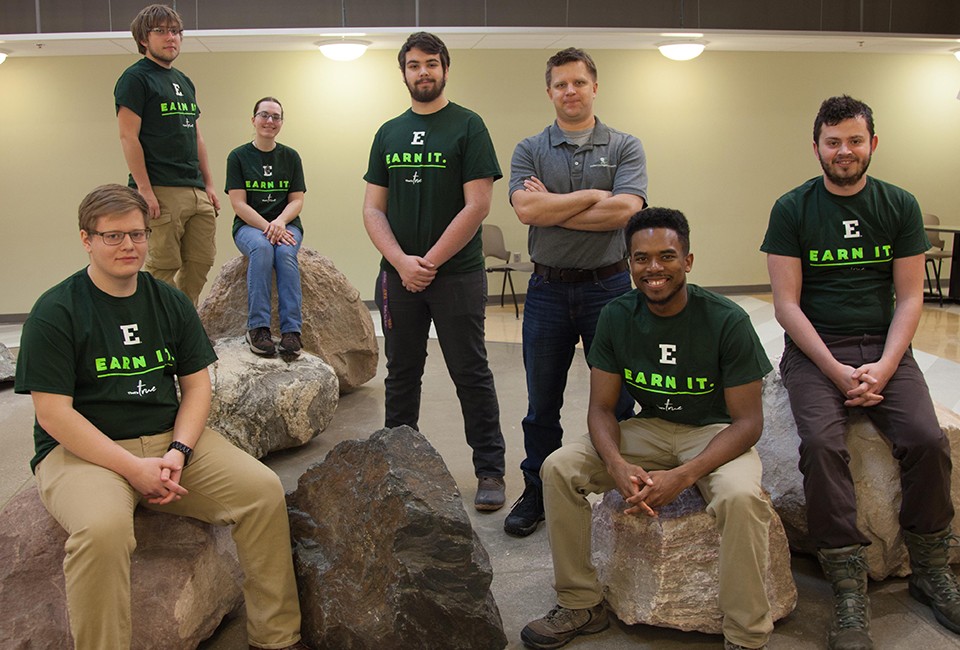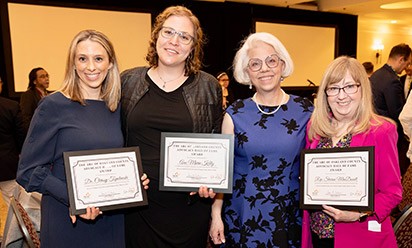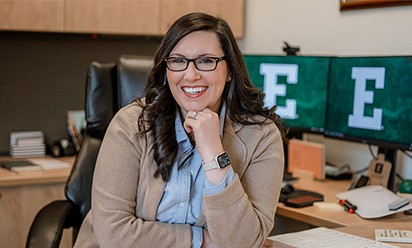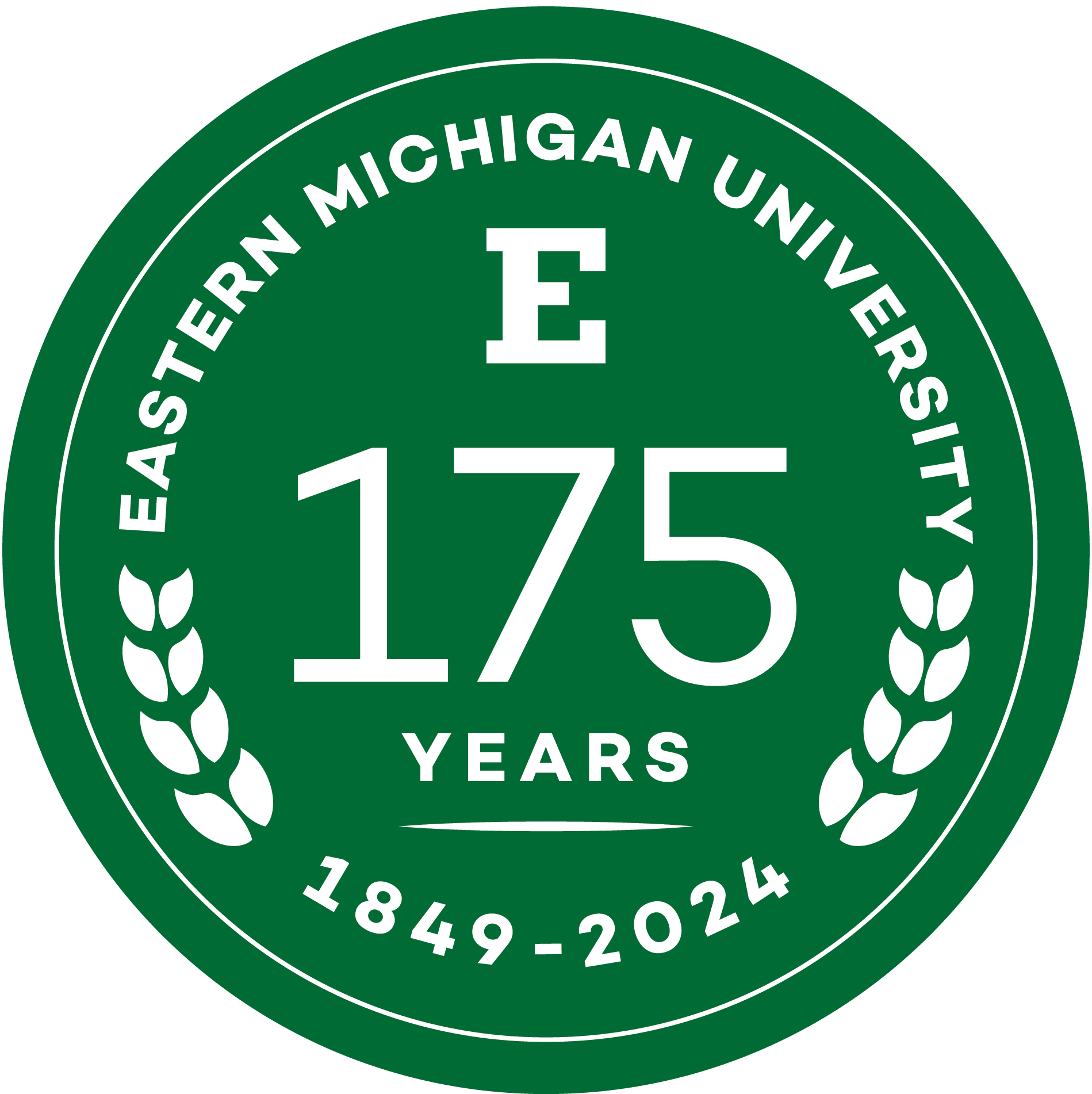Eastern Michigan University students finish second in national competition sponsored by NASA
Project focused on water extraction system for Mars habitation

YPSILANTI – A project by Eastern Michigan University students that showed how to extract water from Mars to help enable human habitation on the Red Planet placed second this spring in a national collegiate competition sponsored by NASA.
The University Student Design Challenge took place at NASA’s Glenn Research Center in Cleveland. The Eastern Michigan students competed in a space-related challenge, which was to design a space-focused, bioinspired system to extract resources from extraterrestrial bodies such as the Moon and Mars into systems for human habitation in the solar system.
The Eastern team included students Andrew Richardson, Sam Carano, Larry Borum III, Rosalie Tezak, Ryan Walker and Kyle Wilhelm. Physics professor Dave Pawlowski served as faculty advisor. The Ohio State University finished first in the challenge.
Larry Borum III said that the Eastern team decided to extract water on Mars using a heated-root system and a drill inspired by activities of the wood wasp and the earthworm.
He noted that the project required an extensive amount of research on energy requirements, water usage, 3D modeling and computer modeling, and that Eastern’s Simulation Animation and Gaming (SAG) program provided the team with an animation to help its presentation.
“We are very thankful for the guidance from our faculty mentor, Dr. Pawlowski, and the support from the physics department,” said Borum, who this past year served as the University’s student body vice president.
Teammate Andrew Richardson said the project enabled students to learn new and applicable skills they can use in their careers.
“This project has given us an opportunity to work on a real-world problem, and it gives us a glimpse into what some of us physicists might be working on some day,” Richardson said.
“Working closely with a faculty mentor has been a great experience. Dr. Pawlowski has done a good job simulating an independent work environment while still providing enough guidance to keep us on track. This environment has cultivated teamwork between students, allowing us to integrate our skill sets together to excel at this project. "
Pawlowski said that his students worked extremely hard on this, their capstone project, completing the difficult challenge this semester.
“Their approach for this project was unique in that they didn't just come up with a system for extracting water from the Mars subsurface,” Pawlowski said of the team. “They thought about every aspect of such a system, from how to produce the energy needed to do the extraction to how to get the extracted water to a future colony and where it would be utilized. Each of these students brought something different to the project, and it wouldn't have been successful without each of their contributions.”
Joel Kearns, deputy director for Space Flight Systems at the Glenn center, noted the relevance of the students’ work.
“Extracting resources from the moon or Mars will give Americans the ability to live off the land in deep space,” Kearns said. “Americans are pioneers, and this challenge inspires students, exercises their skills and adds to NASA’s ideas on how to make sure we can live and work in space in the long term.”
Dr. Ruben Del Rosario, director of Aeronautics at Glenn, cited the challenges NASA faces daily regarding its various missions, be they building a new supersonic experimental aircraft or returning to the moon.
“To address those challenges, we are always looking for new, creative ways to solve problems and move forward,” Del Rosario said. “This challenge is the perfect platform to engage undergraduates and give them the opportunity to share their ideas and develop team building skills.”
In its second year, the University Student Design Challenge is part of the Glenn center’s search for talented undergraduate students with game-changing ideas, another way to help advance NASA’s mission to deep space destinations, including Mars, and help make air travel faster, cleaner, safer and more efficient on Earth.
Competing teams from across the nation were judged on their creativity and ingenuity along with the feasibility of their approach. Other factors considered in judging included autonomous operation, power and propulsion, safety, noise reduction and traffic management.
The top four design challenge teams will visit Glenn’s Cleveland campus to tour its testing facilities. They will also present the findings of their projects to leadership and technical experts at the center.
Students had the option of entering one of two challenge categories. The other competition, in the area of aeronautics, required participants to design a suburban city with infrastructure and accommodations for flying cars and service vehicles.
About Eastern Michigan University
Founded in 1849, Eastern is the second oldest university in Michigan. It currently serves more than 20,000 students pursuing undergraduate, graduate, specialist, doctoral and certificate degrees in the arts, sciences and professions. In all, more than 300 majors, minors and concentrations are delivered through the University's Colleges of Arts and Sciences; Business; Education; Health and Human Services; Technology, and its graduate school. EMU is regularly recognized by national publications for its excellence, diversity, and commitment to applied education. For more information about Eastern Michigan University, visit the University's website.
More Stories

Eastern Michigan University professor recognized on the 2024 Michigan Sports Hall of Fame Ballot for his love of sailing.

Eastern Michigan University professors receive Disability Advocacy Hall of Fame Award from The Arc of Oakland County Michigan.

Eastern Michigan University alumna, Aleksandra Efimova, leads self-made brand, RP to acquisition by renowned industry leader in dance footwear and apparel, Bloch.

Eastern Michigan University Vice President for Enrollment Management Katie Condon-Martin to help shed light on FAFSA “fiasco” as part of Bridge Michigan Zoom discussion on April 24.

Eastern Michigan University awards Summer Research and Creative Activity Grants.

